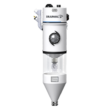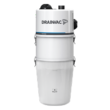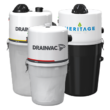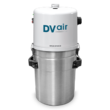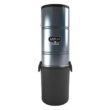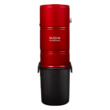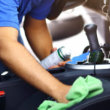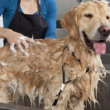Choosing the right central vacuum
How to choose the best central vacuum?
The central vacuum is a household appliance present in many homes and is very effective in maintaining cleanliness. However, few people know about its operation, attributes, and benefits. We will therefore attempt to demystify all the secrets of central vacuums for you.
Vacuum cleaners and cleanliness
Cleanliness in a home is essential, it contributes to maintaining a healthy lifestyle and being better organized. By living in a clean environment, all areas of life are positively affected. The central vacuum is therefore a great ally and a tool that contributes to well-being.
The Importance of Cleanliness for People With Allergies

Cleanliness is of particular importance for people with allergies and respiratory problems. These individuals can see their health affected by the lack of cleanliness and the accumulation of dust. It is almost impossible to completely deep clean a house, but you still have to maintain a certain standard. To reduce allergies, it is suggested to do the following six tasks periodically:
|
Vacuum
Vacuuming can reduce the amount of dust mites in your home. These microscopic insects are not a problem in themselves, but many people are allergic to their excrement.
Vacuuming at least once a week significantly reduces the risk of allergies due to them. Although people with allergies are more at risk, people who do not suffer from them are also affected by dust mites. They can indeed be the cause of irritation and inflammation in the respiratory tract.
Wash the Sheets
The bedroom is the place where we find the most dust mites, and this is because of the sheets. We spend a lot of time sleeping, and exposure to allergens and nasal congestion can greatly affect sleep. It is therefore suggested to wash the sheets at least once a week. This will help you sleep better and have more energy.
Cleaning the Kitchen
The kitchen can easily become a breeding ground for bacteria like E. coli. It is therefore important to keep this area clean to avoid diseases.
Clean the Fridge
The refrigerator is another place that bacteria love. It must therefore be cleaned a few times a year.
Clean Up Mold
It is possible to clean small amounts of mold like the ones that accumulate in your bathroom yourself. However, it is necessary to call professionals to clean those that affect the structure of your home. Mold that is black or dark green in color is by far the most toxic. It can cause skin irritation, breathing problems, and even affect memory.
Avoid Object Accumulation
Avoid accumulating objects, especially those that retain dust such as rugs, decorative pillows, or stuffed animals; it will considerably reduce the amount of dust in the house and it is also advisable to favor blinds instead of curtains.
The importance of vacuuming

We have seen that dust represents a real danger when it is found in large quantities in a home. But where does it come from and what is it made of?
It comes from two places: inside and outside. Dust from inside is made up of skin and hair cells, rotting insects, bits of food, plastic, and dirt. References
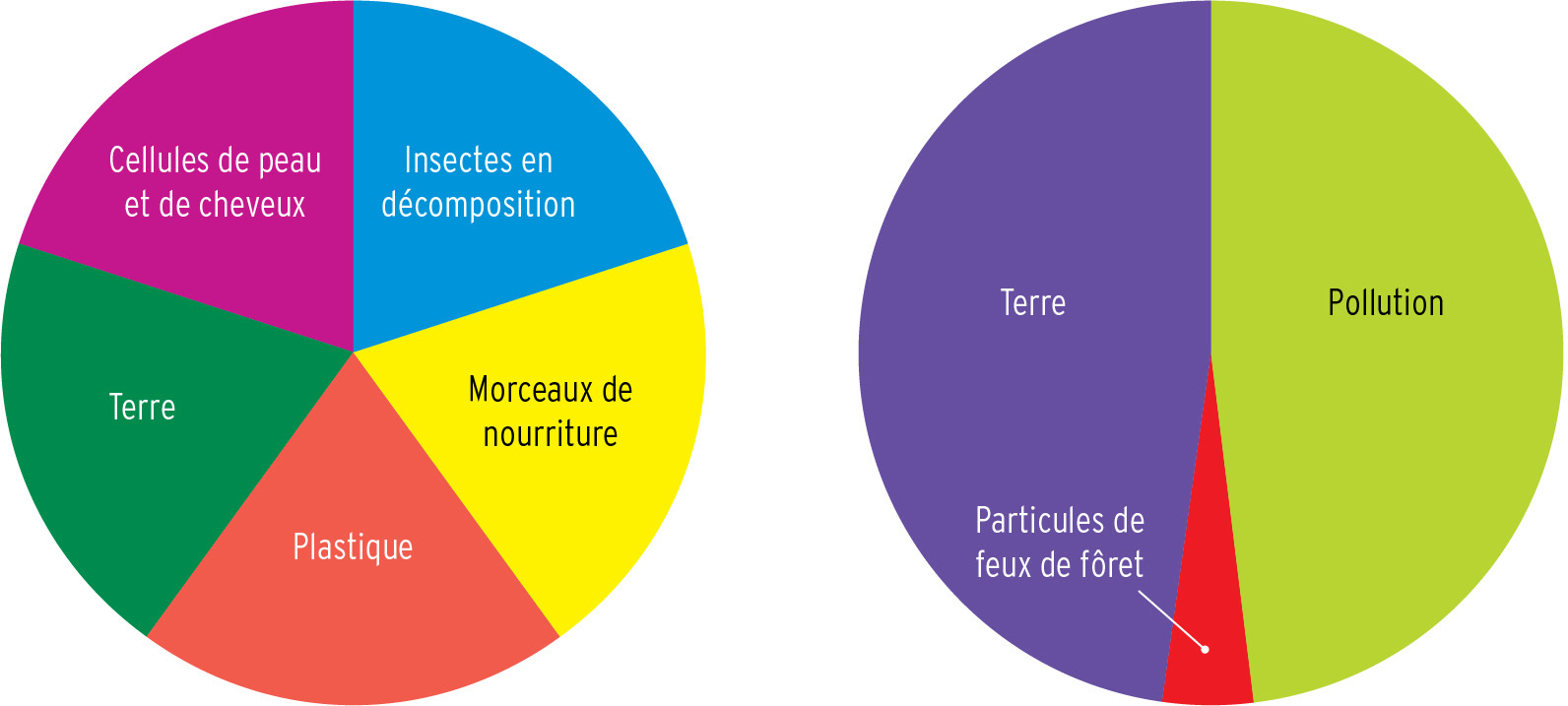
It contains toxins from our clothes and furniture. Packaging, carpets, and clothing contain microplastics which also mix with dust. These toxins are linked to immune diseases, cancers, nervous system damage, and birth defects.
However, most of the dust in our homes comes from outside. This dust is mostly composed of soil and pollution caused by vehicles. Particles related to forest fires can also be added to this mix.
The accumulation of dust is very harmful to our health. Fortunately, we have seen that there are several ways to limit its accumulation. Researchers agree that regular vacuuming is the best way to eliminate dust-related hazards. Vacuum cleaners equipped with HEPA filters for fine particles are even more effective in combating allergens.
Installing a central vacuum in your new home

You now know that it is important to fight against the accumulation of dust in our homes and that the best way to do this is to vacuum. Living in an orderly environment also has a positive impact on quality of life.
Buying a new home is a golden opportunity to implement good habits in your routine and start on the right foot with cleanliness.
Vacuuming is the best way to fight dust, however, there are several types of devices, and it is sometimes difficult to make the right choice. This is especially true if you are in the frenzy of buying or building a new home.
The central vacuum is effective for cleaning large areas, so it is a good appliance to have in a house or in a condominium. However, you have to be well prepared when it comes time to install one.
You must remember that you will need to install a pipping network in your home. You can install it on your own if you are an experienced DIYer. However, it is a task that requires certain knowledge, and it is recommended to hire a professional to take care of it.
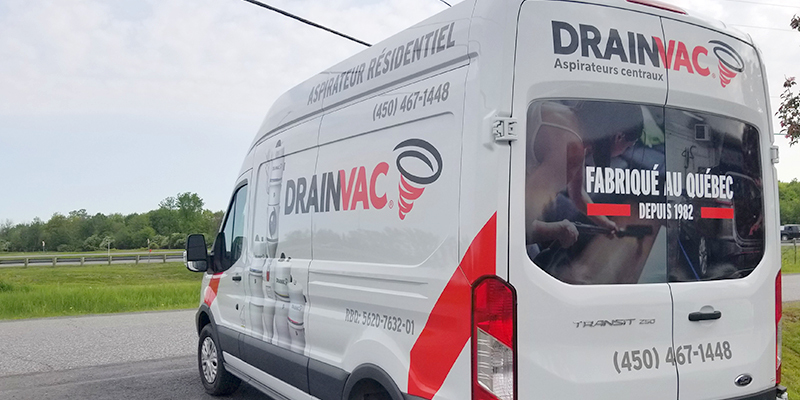
If you know you want to buy a central vacuum when building your house, it is important to plan an electrical circuit that will be dedicated solely to your device. In other words, the socket where you plug it in must be reserved for it and must be the only one connected to the circuit breaker of your electrical panel.
Depending on where you live in the world, the walls of a home can either be made of drywall or concrete. Although it is generally easier to install the piping in drywalls, it is entirely possible to do so when the walls are concrete. We then try to hide the piping by passing it through a cupboard or a storage room, for example.
When to change your central vacuum
Central vacuums are devices with an excessively long lifespan. It’s entirely possible to have the same central vacuum for decades if you take care of it.
However, it may happen that your current device is no longer suitable for you for various reasons. Nothing prevents you from replacing it if you want to change the type of central vacuum or if you want to obtain a more efficient device. It is also easier to replace an appliance in a house than to install a new one since the piping is already in place.
Central vacuum and the value of your home
The real estate market is currently booming. If you’re on the selling side, you’re probably looking to maximize the price you’ll get for your home.
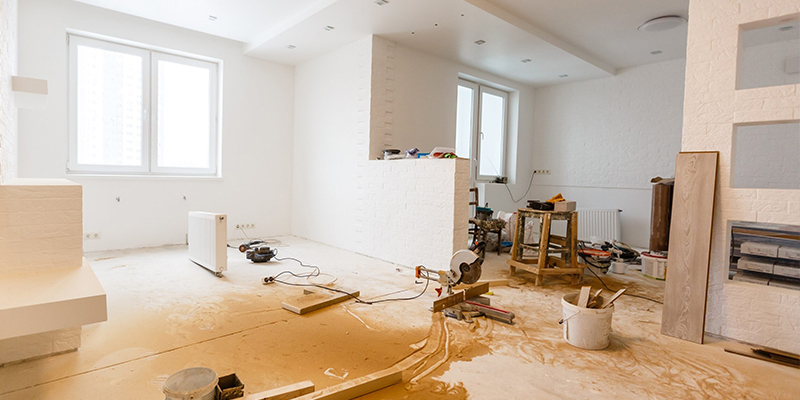
Before selling, people often do work on their house in order to get a better price. When we talk about renovations, we usually think of kitchen cabinets or an updated bathroom.
But did you know that a house with a central vacuum generally gains a value of $2000 compared to a house without one? Considering that a good appliance sells for around $800, you will make a significant return when selling your home.
Amps, volts and watts
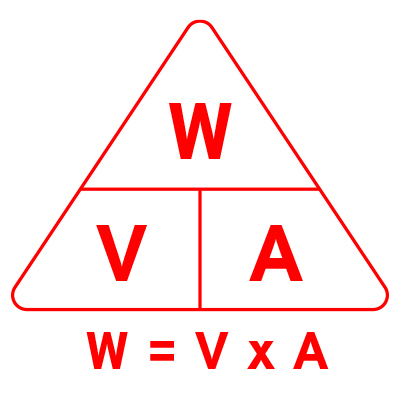
If you’ve ever had an interest in electricity, you’re probably familiar with the terms amps, volts and watts. These parameters are very important in central aspiration.
The amperage corresponds to the level of intensity of an electric current, it is possible to draw a parallel with the flow of a river. The intensity of the electric current corresponds to the flow of water. The wider the river, the greater the flow.
It is possible to take the example of the river to demystify the voltage. In rivers, water flows because of a difference in level between the source and its point of confluence or its mouth. More simply, there must be a difference in altitude between the beginning of the stream and its end. Electric Voltage acts a bit like this slope that allows water to flow it is the pressure that allows electricity to flow through an electrical conductor.
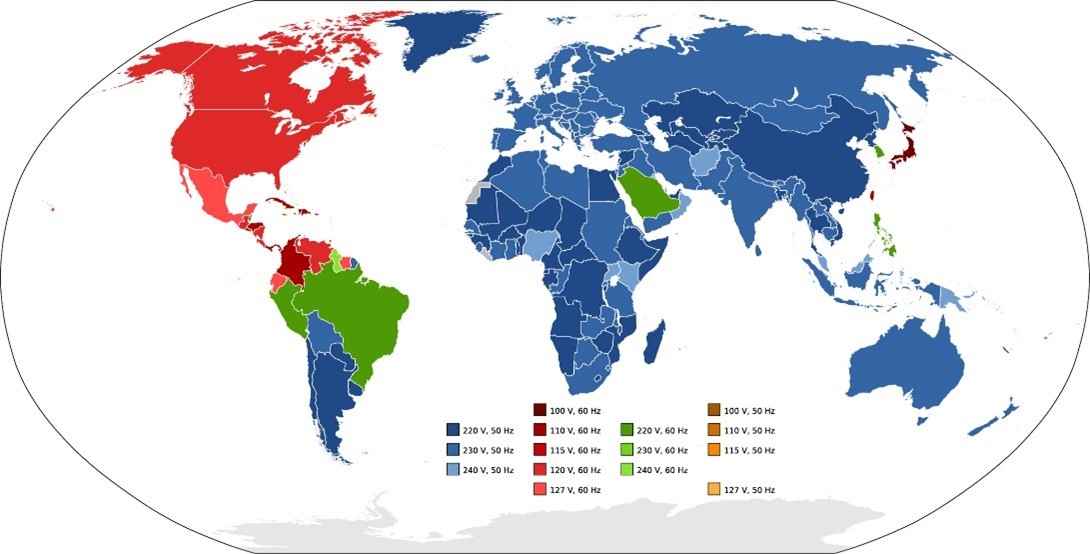
It should be remembered that the voltage varies from one region of the world to another. It is 120 V in North America and 240 V in Europe, Asia, and Africa. It is for this reason that electrical outlets are not the same everywhere.
A device with a higher voltage does not automatically mean that it is more powerful; the regions which use a higher voltage have a lower amperage giving, in the end, a power (calculated in watts) equivalent to that of the regions operating with a lower electrical voltage.
You should know that the number of watts is obtained by multiplying the amperage by the voltage. There is a popular belief that watts are the indicator of the power of a central vacuum, but it is false: they indicate the electrical power that an appliance consumes for its operation. A well-designed device will have strong performance while having low power consumption.

But then, how do you know the overall performance of a central vacuum? The answer is simple, you have to look at the airwatts and not the watts. The airwatts are obtained from a calculation between the water column and the airflow. You should not choose a vacuum cleaner with a large number of watts since they are used to measure what the appliance consumes in electricity. Instead, opt for a vacuum cleaner that does not require a lot of watts while offering optimal airwatts.
Usually, a unit between 600 and 800 AW will meet your needs; try to avoid 550 AW and below. However, it is possible that you may need more than 800 AW if you use a 40-foot (12-meter) hose or more, or if your vacuum cleaner is located on a higher floor level and the vacuumed waste must counter gravity in order to reach the unit. If one of these two situations applies to you, you will need more air watts. However, there is currently no motor for central vacuums offering a power greater than 800 AW, so the solution is to go with a dual-motor unit. You will find more information on this subject a little later in your reading.
Water column and air flow
We have seen that airwatts, the most important data to consider when buying a central vacuum, is calculated from the airflow and the water column. The data of these two are related to each other and are usually necessary to choose a vacuum cleaner that will have: either a higher water column; or a higher airflow, depending on your needs.
The airflow is calculated either in CFM (cubic feet per minute), or in m3/h (cubic meters per hour) and determines the quantity of air vacuumed per minute or per hour with the hose's orifice fully opened. The higher its value, the greater the cleaning area covered by the vacuum cleaner.
If the objective is to reach as far as possible for dust, opt for high airflow. This is also the case if you have a ceramic, linoleum, or laminated floors. In other words, if you don’t have large carpet areas, high airflow levels is what you need. This will allow you to vacuum faster without having to go over the same spot twice.
For its part, the water column is calculated either in H2O or in mmH2O and indicates the maximum suction force of a vacuum cleaner when the hose's orifice is blocked. The higher the value of the water column, the more the unit can vacuum dense materials and heavy objects. If your goal is to deep clean carpets, litter grains, or pick up liquids, you’ll be looking for a high-water column.
Quick tip - You can modify the ratio between the airflow and the water column by using a crevice tool. By doing so, you will significantly reduce the airflow and increase the water column, thus allowing you to vacuum denser materials.
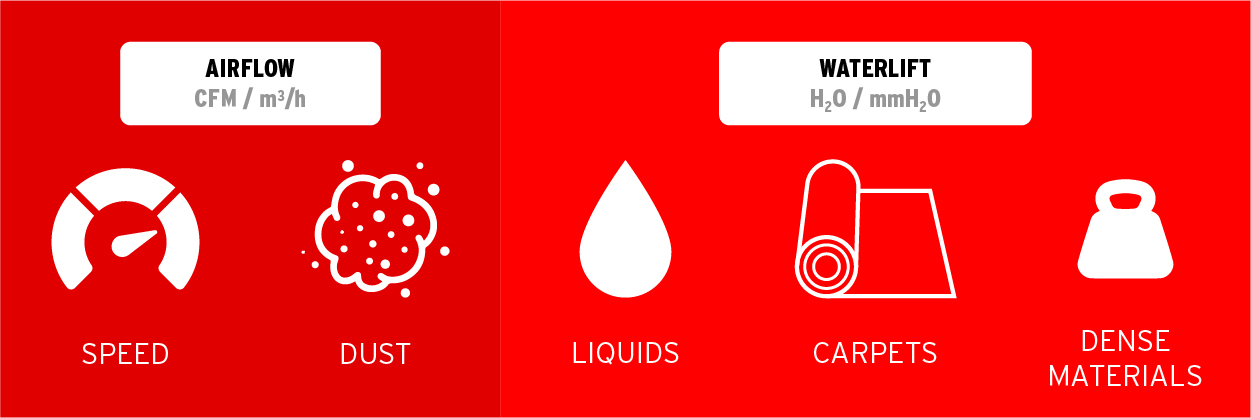
It is entirely possible that two devices have the same amount of airwatts, but one has a higher water column with less airflow and vice versa. Therefore, it is important to check the data of both, so that your central vacuum meets your needs.
Double motorisation
We have seen above that it may sometimes be necessary to opt for a central vacuum with two motors instead of just one. Although 90% of the time a single motor unit is more than enough, dual motorization will help if your piping configuration is designed so that the vacuumed dust must counter gravity or if you are using a very long hose causing a loss of power; mainly in the water column.

First of all, know that two motors can be connected to each other in series or in parallel. A series configuration means that the air passes through the first motor, then through the second motor; the airflow remains about the same, but the water column is considerably increased. This is what we usually look for. Note that two motors can also be connected in parallel, but this configuration is usually used in a commercial environment to increase the airflow: the device then finds itself with two separate air outlets.
In both cases, if a unit works with two motors of 600 AW each, for example, we will not say that the device has a power of 1200 AW, because the calculation of the airwatts is done per motor and cannot be added. You will then see the power of the device in this form: « 2 X 600 AW».
There are also three points to take into consideration if you are thinking of acquiring a dual-motor central vacuum cleaner.
1. In North America, central vacuums generally run on 120 volts like all other small appliances. Devices with two motors can require more and so you will find some at 240 volts like Drainvac's G2-2X5. Plan for your electrical connection.
2. With two motors, the power output is such that a filter like the Activac 3 cannot be used for indoor air output. It is, therefore, strongly recommended to provide an outdoor air outlet to maintain healthy air inside.
3. Finally, you won’t be surprised to learn that dual-motor units are noisier than regular single-motor models.
So, in your search for the optimal model, you may be tempted at first to choose the strongest, but rather assess your real needs in order to find the best vacuum cleaner for you.
Major players in central vacuums
A central vacuum is an appliance that has been present in our homes for many years. Therefore, there are several players on the market that we can name such as Drainvac, Broan-Nutone, Beam, Cyclovac, Duovac, Husky, Cana-Vac, Vacumaid or Venmar.
There are also several manufacturers based in Canada such as Nuera Air, Nadair, Cyclovac or Drainvac. All are more or less equivalent, except for Drainvac, which has also specialized for 40 years in the design and manufacturing of vacuum cleaners that can vacuum liquids and solids.
The different types of vacuums
In addition to central vacuums, there are other types of devices for cleaning dust: the upright vacuum cleaner, the canister vacuum cleaner and the robot vacuum cleaner. Each of these devices has its faults and qualities and it is important to know them to choose a device that will really meet your needs.
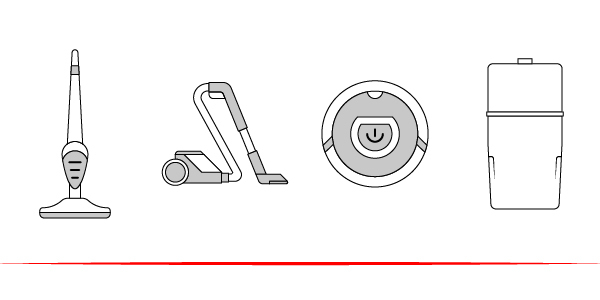
1. Upright vacuum cleaner
The upright vacuum cleaner is probably the first device that comes to mind when you think of this type of appliance. They are lightweight devices with the vacuum head located in the same unit as the motor. Some models are corded while others are battery-operated.
The main advantage of the upright vacuum is that it can be deployed quickly to clean up small messes. Its design makes it easy to use for people of all ages and it is generally possible to pair it with a large number of accessories. Its compact design allows it to be easily stored in small spaces.
It is in a way a modern version of the conventional broom. In this sense, its main disadvantage is its lack of power. It is a device that’s suitable for people who want to clean up small messes or do a quick cleanup. If you own a home or have large areas to clean, you should avoid upright vacuums.
It should also be noted that models equipped with a wire are sometimes difficult to use on stairs. Those running on battery power can also have rather limited autonomy.
2. Canister vacuum cleaner
The canister vacuum cleaner is another type of device that is extremely popular with consumers. Since the motor for these is in the cart, they are much more powerful than upright vacuums. Some models with more power may be suitable for larger homes, but they are also suitable if you live in an apartment or own a condominium.
Although they are quite efficient, canister vacuum cleaners have, as their name suggests, a canister, forcing you to constantly drag it around with you. It can quickly become complicated to use your device if you have steps. You also need to remember that the canister vacuum needs to be constantly plugged in, which again can be a problem for stairs.
Since you’re literally dragging the unit’s motor with you when vacuuming, you won’t be able to escape the noise it makes. You should also remember that vacuum cleaners often give off an odour when they are running. Since you are close to the motor, you will inevitably be exposed to it.
3. The robot vacuum cleaner
The robot vacuum cleaner is the latest trend in vacuuming. In a world where every second counts, these devices literally promise automation of cleanliness and dust collection. The reality, however, is very different since robot vacuum cleaners tend to get stuck in certain obstacles such as objects on the ground or carpets, you must at least be present when they work.
Although they clean large surfaces well, they do not do so precisely, and you often have to go over corners with another type of device. Their battery life is generally not good enough for a long household and you will often have to send the device back to its charging base.
If your home has multiple floors, a single robot vacuum won’t be enough, and they’re not effective on stairs. Finally, robot vacuums aren’t the most powerful household appliances, and they won’t hold their own in a home with pets or a lot of rugs. In summary, this type of vacuum cleaner is suitable for doing extra cleaning and can reduce the frequency with which you will have to clean. However, you will need another vacuum cleaner that you will have to pass on occasion.
4. The central vacuum cleaner
The central vacuum is undoubtedly the most powerful and versatile appliance among those listed. Its power and the many accessories with which it is possible to couple it, make it suitable for several types of use.
The central vacuum is the perfect appliance to do a thorough cleaning of your home. It is effective on carpets and for collecting pet hair. Although it emits noise and odors like the canister vacuum, by strategically placing the device in an isolated room (basement or garage), you will avoid these inconveniences.
There is a wide choice of central vacuums, some of which ensure that you will never come into contact with the dust collected, which is a plus if you suffer from allergies. Other models can also vacuum liquid materials, an always practical option in case of the unexpected.
Perhaps the only downside to central vacuuming is the installation of its piping and its initial cost. However, the investment is worth it since it is not uncommon to see appliances last a lifetime if their owner takes care of them. The central vacuum is the perfect device for collecting dirt in a house.
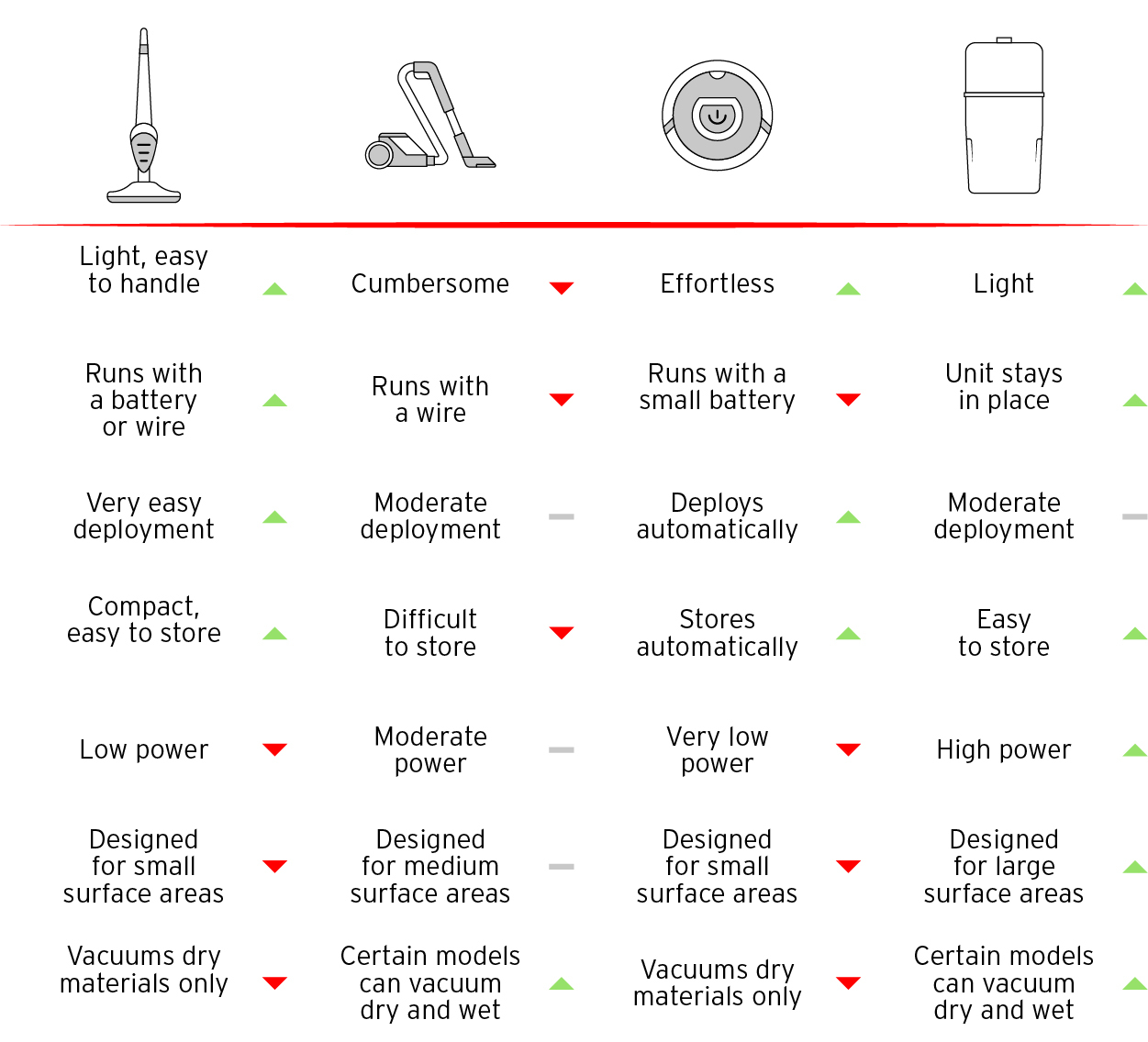
Types of central vacuums
There are different types of central vacuums, each of which meets specific needs, whether in terms of power, maintenance, longevity, performance, or surface area to be cleaned.
1. With bags
Central vacuums with bags are probably the oldest technology in central vacuuming. Despite this aspect, they remain very reliable and efficient devices. Many people prefer to have a bagged device because during maintenance, they do not come into contact with dust, unlike a vacuum cleaner which collects the materials vacuumed into the tank. They are therefore ideal for people who suffer from allergies.
2. Cyclonics
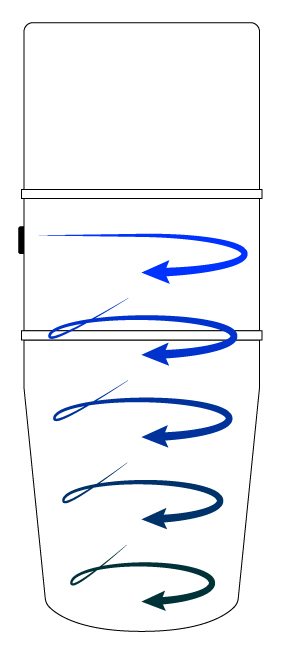
Cyclonic vacuum cleaners came to be in the late ’80s and have enjoyed great popularity ever since. Despite this aspect, the cyclonic method remains relatively unknown. As their name suggests, these devices rely on the principle of a cyclone to do their job.
The formation of this is made possible by the shape of their tank which forms a funnel. The vacuumed dust becomes trapped in the cyclone and the heaviest waste falls to the bottom of the tank. In summary, the cyclone separates air and dust.
This type of device has several advantages.
• They incur few recurrent costs
Since you do not have a bag to change, you will save on the price of it.
• They are powerful
The fact that they are bagless ensures that they maintain constant power.
• They can aspirate liquids
Certain models like the DV1R12-CT and the DV1R15-CT by Drainvac can vacuum liquids.
• They are ecological
If the environment is important to you, the cyclonic action models will suit you since, without a bag, they do not produce additional waste.
If you suffer from allergies, cyclonic action appliances may not be suitable for you since you will be in contact with the dust when you empty the tank. If so, you’re better off opting for a device with a bag or one that empties into the sewer.
3. Vacuum cleaners for liquids
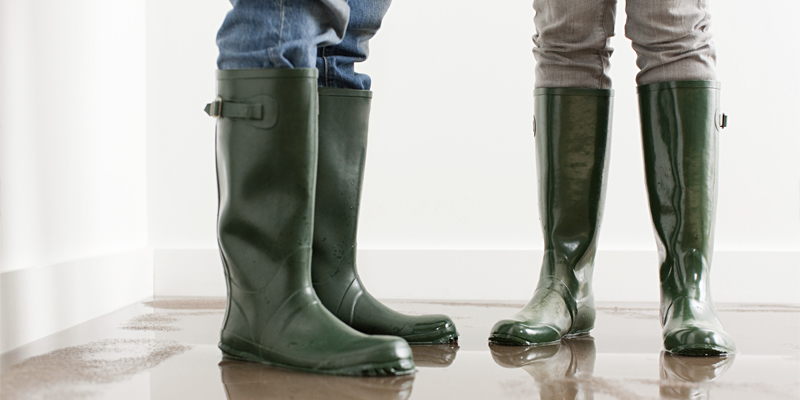
You read correctly; it is quite possible to vacuum liquids with certain types of vacuum cleaners. This is very practical in case of unforeseen events such as a leak or even a flood. Having this type of device could, for example, save you a lot on your insurance premium.
The operation of these vacuum cleaners is simple, they are generally connected to the sewer network of your house and the vacuumed waste drain directly into the pipes. Like a toilet would. They are also equipped with a mesh that prevents bulky objects from passing in order to respect the environment. This also means that you can recover inadvertently picked-up objects such as keys or rings. They are also suitable for people with allergies since they drain directly into the sewer, so contact with dust is non-existent.
Different types of filters
Almost all vacuum cleaners work with a filter. But the type of filtration can differ widely from one model to another. The latter is not the most well-known component of a vacuum cleaner, and few people are interested in the differences between the models. However, it is important to know the many filters that exist on the market since they are of paramount importance in the quality of the air in your home. Whether we are talking about foam filters, outlet filters, cage filters, HEPA standard, Dacron filters, or water filters, all have the role of reducing the dust released into the house.
Foam filter
Foam filters are usually placed inside the central vacuum. The air makes its way into the tank and passes through the foam filter before being released.
This type of filter is inexpensive because it is often a permanent filter that can be cleaned with compressed air. However, this is an entry-level filter. The other models do a much better job of purifying the air.
Cage filter
The cage filter is a permanent filter that is placed under the head of the central vacuum. Its great quality is that it is extremely durable and requires little maintenance.
However, it is recommended to wash it in the machine at the same time as changing the bag. Caution—the cage filter must be completely dry before replacing it.
Cartridge filter
Cartridge filters, like foam filters and cage filters, are placed inside the central vacuum. However, their operation is slightly different.
It is a metal membrane that filters the vacuumed materials. They can be placed in a vacuum cleaner that can clean liquid materials and it is possible to clean it well with water unlike the foam filters.
Output filter
As its name suggests, this type of filter is placed at the outlet of the central vacuum if it is inside the house. Carbon exhaust filters that have the HEPA standard are particularly effective and act almost like air purifiers.
Since they block 99.7% of particles, the air in your home will be cleaner and the risk of allergic reaction will decrease. Charcoal outlet filters also greatly limit bad odours!
The HEPA standard
We have seen that carbon outlet filters like the Activac 3 from Drainvac have the HEPA standard. But what do these four letters mean? HEPA is the acronym for « High Efficiency Particulate Air »; a standard that states that a filter must filter out 99.7% of particles.
The function of HEPA filters is relatively simple, it consists of joining several layers of polypropylene or fiberglass fibers. These membranes stacked on top of each other retain dust.
Filters operating on this principle are widely used in the biomedical field since they prevent bacteria and viruses from spreading. They greatly reduce the spread of diseases through the air.
Dacron filter
The Dacron filter is mostly found in commercial or industrial type devices and acts a bit like a « filter to the filter.»
It looks like a bag that is installed on the cartridge filter of the device in order to facilitate its maintenance and to provide additional filtration.
Bag vacuum cleaners
We have seen that some vacuum cleaners trap dirt in their tank while others trap it in bags.
Even if it is impossible to speak of a filter strictly speaking, the bags still have a certain filtration effect.
Device draining into the sewer
Sewer-draining devices like Drainvac’s Automatik don’t have a filter to speak of. The vacuumed materials mix with water before being discharged into the sewers. The water acts as a filtration system.
These devices release almost no dust into the air, they are optimally filtered, making these vacuum cleaners the perfect model for people with allergies.
How to choose a central vacuum

Purchasing a central vacuum is a relatively expensive investment and several factors must be taken into consideration to find the unit that is best for you. We will therefore explore the important characteristics to consider when choosing a high-performance vacuum cleaner.
Determine the power
The power of a central vacuum is calculated in air watts. This unit of measurement relates airflow, suction, and power consumption.
The power of the majority of devices is between 600 and 700 AW. However, Drainvac’s S1008, G2-008 and DV1R800 all produce 800 AW. The G2-2X5 model even has two 500 AW motors!
If your house has large areas of carpet, your vacuum cleaner hose is long or depending on the configuration of your pipes, you will need to favour a powerful vacuum cleaner.
Many guides make the mistake of only considering airwatts when recommending a device. This data should only be used to target certain models. To make a final choice, consider data such as the water column, the capacity of the tank, the type of filtration, the size of the device, the noise emission or the type of maintenance you prefer.
Vacuum cleaner with or without bags?
Whether you choose a vacuum cleaner with a bag or not, you will be satisfied with your purchase, since they are both powerful options.
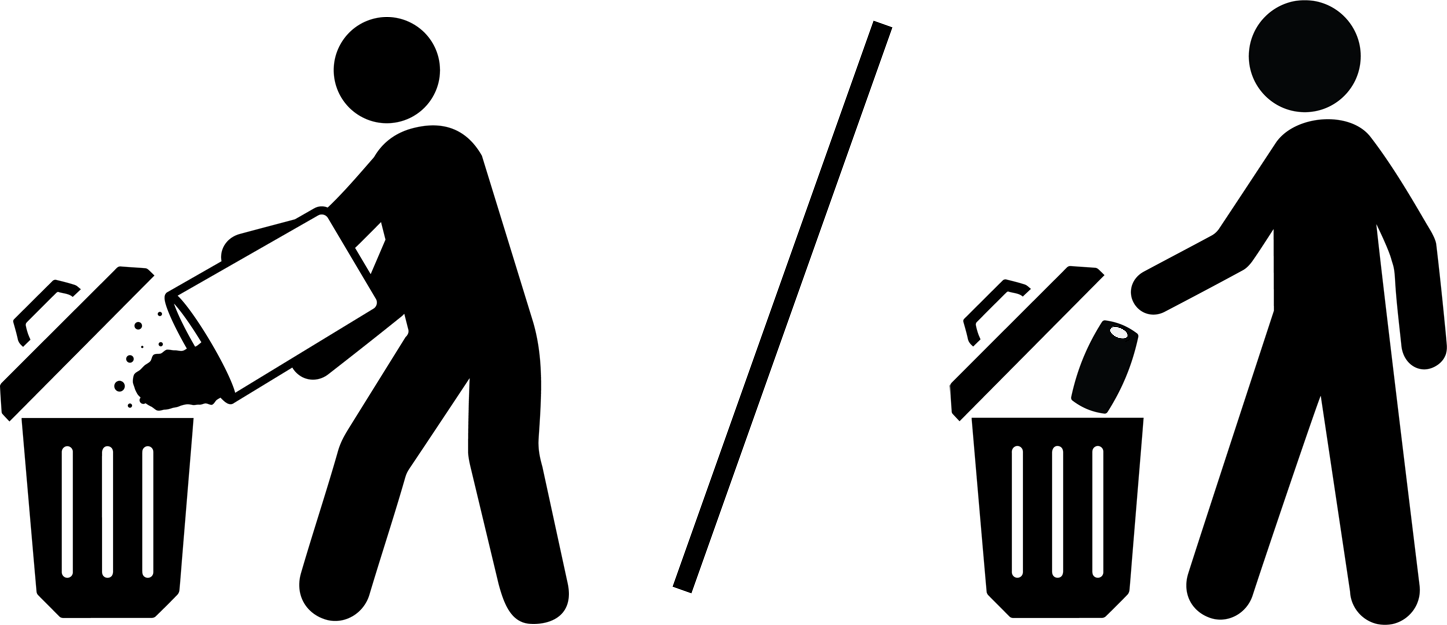
Bagged models such as the S1000 and Génération 2 series are suitable for people who suffer from allergies since you will not come into contact with dust when emptying the vacuum.
Bagless models have the advantage of reducing costs since you don’t have to spend on these accessories. They are also more ecological since they do not produce waste.
If I have pets
Not all vacuum cleaners are equally effective when it comes to picking up pet hair. If you have four-legged friends, it is better to choose a powerful model with a large capacity tank or with a bag to facilitate emptying the device.
The noise
Noise is another aspect to consider when choosing a central vacuum. This is especially true if you live in a condo or a small house. The least noise-emitting devices hover around 60 dB and most retailers allow the devices to be tried out in-stores. It is also possible to add a silencer to your central vacuum.
Drainvac central vacuum and other brands
A central vacuum is a must when it comes to cleaning, but unlike a washing machine or dishwasher, central vacuums are often hidden, installed in the basement. As a result, these devices are invisible to the eyes of the user and some might think that all brands are equivalent and that it is all the same, but this is far from the case.
Drainvac expertise vs the competition
When the time comes to choose a central vacuum, beyond the model, you must also compare the different brands on the market, and it can quickly become difficult to navigate. There are a large number of brands in the field such as: Husky, Venmar, Cyclovac, Vacumaid, Broan-Nutone, Beam, Duovac, or Cana-Vac to name a few.

Here’s where Drainvac stands out compared to these other brands:
• Drainvac specializes in designing and manufacturing central vacuums and cleaning systems in the residential, commercial, and industrial sectors. You can therefore be assured of having a very durable and efficient central vacuum cleaner benefiting from a very high level of expertise!
• Drainvac central vacuums are all made in Canada with a large majority of components coming from local suppliers, including printed circuit boards (PCB).
• Drainvac’s expertise is not limited to designing and manufacturing dry vacuum cleaners. Only at Drainvac can you benefit from 40 years of know-how in models that also vacuum liquids.
Drainvac vacuums are available in hardware stores, department stores, a large network of retailers, and online. They are therefore very easy to obtain, and maintenance can be done easily at a point of sale, such as a retailer.
Drainvac's different models
Drainvac has been manufacturing high performance central vacuums since the ’80s. They suit all budgets and performance levels.
The S1000 Series
Drainvac’s S1000 series only has an 800 AW model used with a bag. It is a compact vacuum that easily fits in tight spaces. Its semitransparent canister lets you see when the bag is due for a change. A silencer is included. This vacuum can handle an area of up to 3 500 square feet (325 m2). What to remember: low initial purchase cost; easy to install in tight spaces; quiet and very efficient! For more information: S1008
The Generation 2 Series
The Generation 2 series is comprised of four large-capacity bag models: the G2-008, G2-007H, G2-2X5 and G2-2X3. The following models have a capacity of 9 gallons (41 L) and can cover an area of up to 8 500 square feet (790 m2). They are all equipped with a bag to collect dust and vacuumed materials.
The G2-008 is the basic model of the series, it includes an 800 AW motor and does not emit more than 60 dB. Its large capacity canister and powerful motor make it one of Drainvac’s most popular vacuum cleaners. It suits perfectly for people looking for a first central vacuum that will give them good performance for many years.
The Heritage (G2-007H) is very similar to the G2-008. However, it slightly differs in power of 700 AW, but its great advantage is that its carbon brushes last twice as long. You will therefore buy peace of mind since you won't need to check the motor's carbon brushes before 1 000 hours of use.
The G2-2X5 features two 520 AW motors making it the most powerful model in the G2 series. People who choose this model usually do so because of the pipping length in their home. It is generally suggested to install your central vacuum in the basement of your home in order to ensure that the vacuumed waste follows the natural force of gravity.
However, installing the central vacuum in the lowest room is not always an option. That’s why the G2-2X5 exists! With its extra power, it ensures that the vacuumed waste gets to the tank even if it has to counter gravity. We also suggest this model if you use a hose of 40 feet (12 metres) or longer. With all that extra power, this model requires a 240 V electrical socket.
The G2-2X3 also uses two motors generating 302 AW each, an alternative solution to the G2-2X5, operating on a 120 V circuit.
The DV1R800 is the entry model of the series. It is designed to vacuum dry materials only; with an 800 AW motor that does not exceed 60 dB. It works with a foam filter.
The DV1R12-CT can vacuum liquids and solids. It differs from the DV1R800 model since it is equipped with a cartridge filter which protects the motor from very fine dust. It is powered by a 700 AW motor, and just like the Heritage, its carbon brushes last twice as long as those on other regular models.
The DV1R15-CT is equipped with two 355 AW motors and operate on a 30-amp circuit. It is without a doubt the most powerful Cyclonik and it is also equipped with a cartridge filter that provides optimal filtration protecting the motor from finer dust.
The Automatik Series
The Drainvac Automatik has only one model : the DV2A310-CB. With its two 355 AW motors, its ability to vacuum liquids and solids and its very low maintenance, this central vacuum is one of the most efficient and easy to use on the market.
It differs from other vacuum cleaners because it empties directly into the sewer. The vacuumed materials are optimally filtered by the water, so you will have a perfect system for allergy sufferers.
The vacuum cleaner is also equipped with a plastic meshed cone which allows you to recover involuntarily vacuumed objects or even hair and animal fur.
Vacuum cleaner for liquids and solids
We have just covered the main features of the Automatik, one of Drainvac’s flagship models developed nearly 40 years ago. The commercial Automatik line has always had great success since the ’80s, but the residential Automatik line is rather unknown in general. If you want to know a little more about this device, the following might interest you.
Operational Sequence of the Automatik
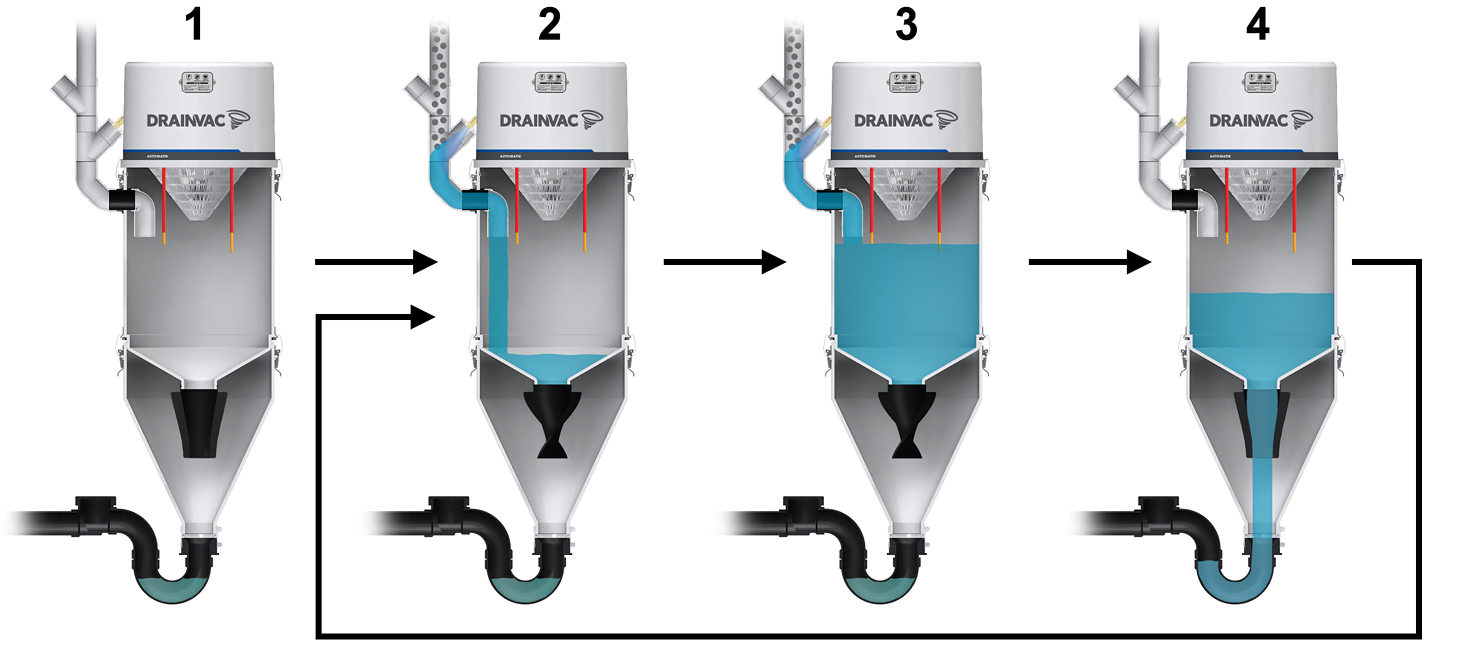
Although innovative, the operation of the Automatik is very simple:
1) The device is off.
2) As soon as the user activates the switch on the handle of his hose, the vacuumed material is mixed with water.
3) The soiled water rises for 10 to 15 minutes until it touches the electrodes.
4) The electrodes then send the signal to drain the canister and the cycle restart.
A control panel on the top of the device allows you to test the device in the event of a breakdown, to reset the counter following maintenance and to adjust the flushing time.
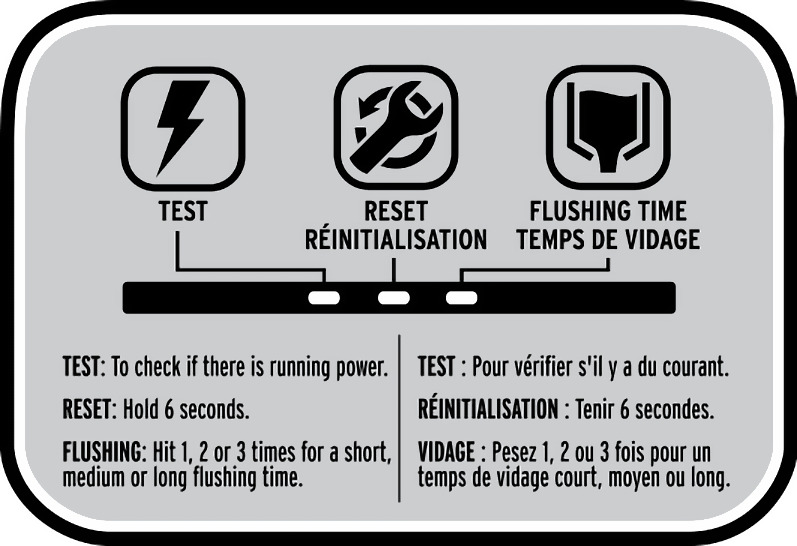
On the maintenance side, this model is the easiest to maintain on the market, all brands combined. No bag or filter to change and no canister to empty. If necessary (generally once a year), you can simply open the porthole in the center of the unit and clean the electrodes with a sponge and then the protective grid. You can also inspect the plastic mesh at the bottom of the lower canister.
The Advantages of the Automatik
You can deal with the unexpected quickly
If you are the victim of a flood, a water leak, or a sewer backup and you have no equipment at your disposal to evacuate the water, the damage will already be done by the time you get to the hardware store.
On the other hand, if you have a vacuum cleaner that can pick up liquids, you can get rid of water very quickly, avoid damage and even save costs on your insurance premium.
You will gain efficiency
Portable “Shop-vac” type vacuum cleaners must constantly be emptied, which costs you efficiency and time. If for some reason, you need to vacuum large volumes of water, you willll save a lot of effort with a device like the Automatik that empties directly into the sewer. This allows you to clean continuously.
They require maintenance
As seen previously, the maintenance of the Automatik is really minimal and infrequent.
They are perfect if you suffer from allergies
Since they do not require maintenance, you will never come into contact with dust. Drainvac's Automatik central vacuum cleaners are therefore ideal for allergy sufferers.
They can save your carpets
If you drop a staining substance like cola or sauce, your first instinct will be to blot it up with a towel or paper towel. This will spread the liquid, making it almost impossible to sponge it out entirely. Whereas a central vacuum cleaner will allow you to clean up a mess quickly and thoroughly without spreading it further. You can then apply a stain remover to your carpet.
It is an ecological solution
Some may believe that such a device that drains into the sewer create pollution, but this is a myth! They are equipped with a mesh basket that retains bulky waste. There is therefore only the dust which continues its way in the pipes.
Precautions to be taken when vacuuming certain materials
Did you know that certain materials should never be vacuumed with a vacuum cleaner? While other materials can only be vacuumed with the Drainvac Automatik.
Construction dust
Construction debris like wood dust or drywall dust are particles so fine that they can pass through your unit’s filter and damage the motor. Even for the Automatik, vacuuming this type of dust should be avoided. However, Drainvac has commercial solutions to circumvent this problem using dust separators that filter the vacuumed materials before reaching the motor.
Many people mistakenly believe that « Shop-Vac » type vacuum cleaners can vacuum these very fine dust without any problem, but it's false. It is simply because they are inexpensive and have a short lifespan that many users rather choose these devices for this type of usage, but it is just as damaging to the motor.
Ashes
Like construction debris, ash is fine enough to pass through your unit’s filter, thus damaging the motor. They are difficult to sweep up since they tend to fly away and float around in the air.
You must also be very careful when picking up the ashes since they can stay hot for more than 72 hours and cause a fire!
The best way to get rid of these is to moisten them and pick them up with a broom and dustpan.
Glass
Broken pieces of glass tend to get stuck in the hose and pipes connected to your vacuum cleaner and can damage them. Broken glass could also rip the filter or the bag.
Materials that only the Automatik can vacuum
Liquids
As mentioned before, it is completely safe to vacuum liquids with the Automatik.
Coffee Grounds
Coffee lovers know that cleaning the coffee maker can sometimes be a challenge. But the Automatik can handle that very well! Also, coffee particles tend to stick to the pipes, but vacuuming water and some paper towels afterwards will keep your pipes clean!
Wet Dirt
Just like coffee grounds, damp dirt will clog the filter or the pipes. But with Drainvac's Automatik, there is no danger for the unit. You can even vacuum some water after cleaning to keep your pipes and hose clean!
Installalling a central vacuum
There you go, it’s done: you have chosen your central vacuum! Now is the time to install it. Will you choose to have it installed by a professional or will you do it yourself? Will you be venting outside the house or inside? Where to locate the wall outlets? Here are some tips to follow to make the right choice so that everything goes well!
Installing your central vacuum yourself
Are you confident you can install everything yourself? To give you a better chance of success, you can refer to the installation manuals downloadable here.
In addition, planning is a crucial step to ensure proper execution of the project and for your central vacuum to operate optimally thereafter.
Determine in advance the location of the device taking into consideration the space occupied as well as the noise produced by the motor.
Then, determine in advance the location of the wall sockets; you can use our advice on this subject to help you. And finally, plan precisely how the piping system will be installed in your home. Do not forget that a water central vacuum requires special attention for installation.
Do not hesitate to ask the help of a qualified electrician: this help can be invaluable in this type of project. Finally, do not forget a very important step: verification. Make sure every outlet offers optimal suction quality.
Call a professional
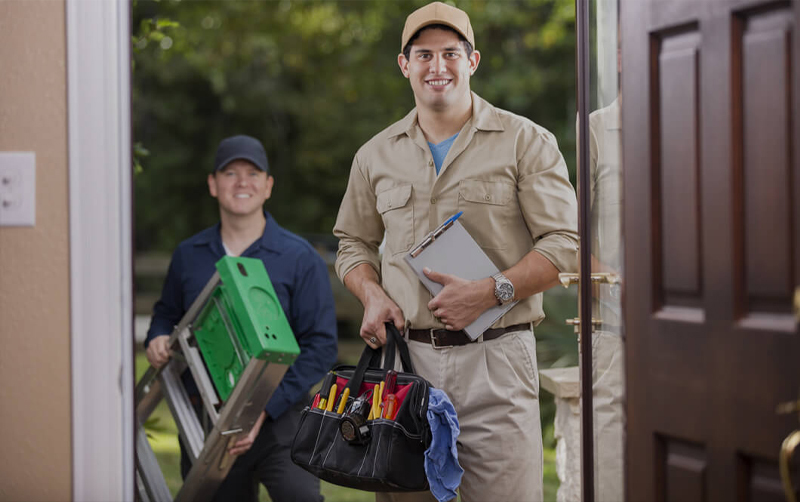
Installation by a professional is unequivocally the option we recommend. It is advantageous to employ an experienced installer since you will be assured of an excellent quality of installation and suction, and everything will be operational the same day!
Installation services are offered by any authorized dealer. To find a Drainvac certified dealer near you, visit the « Retailer » section in the horizontal menu at the top of this page.
A professional installation is particularly recommended for Automatik systems for the following reasons :
• The unit must be connected to a cold-water source, because even if you vacuum only dust, this will be mixed with the water to form dirty water in the tank.
• The tank must be connected to the sewer in the same way as a toilet or a sink.
• An outdoor air outlet is required.
• The installer will have to check your existing piping to ensure that the connections are properly tightened and that there is a slight angle towards the unit for the water to flow naturally.
Once these steps have been completed, you will see that the Drainvac Automatik central vacuum is the most versatile and easy-to-maintain device! You can vacuum water messes, empty the spa, clean the floors, etc. And there are no canister to empty, bags or filters to replace. Those who choose an Automatik generally do not return to a conventional central vacuum afterwards.
Indoor or outdoor air outlet
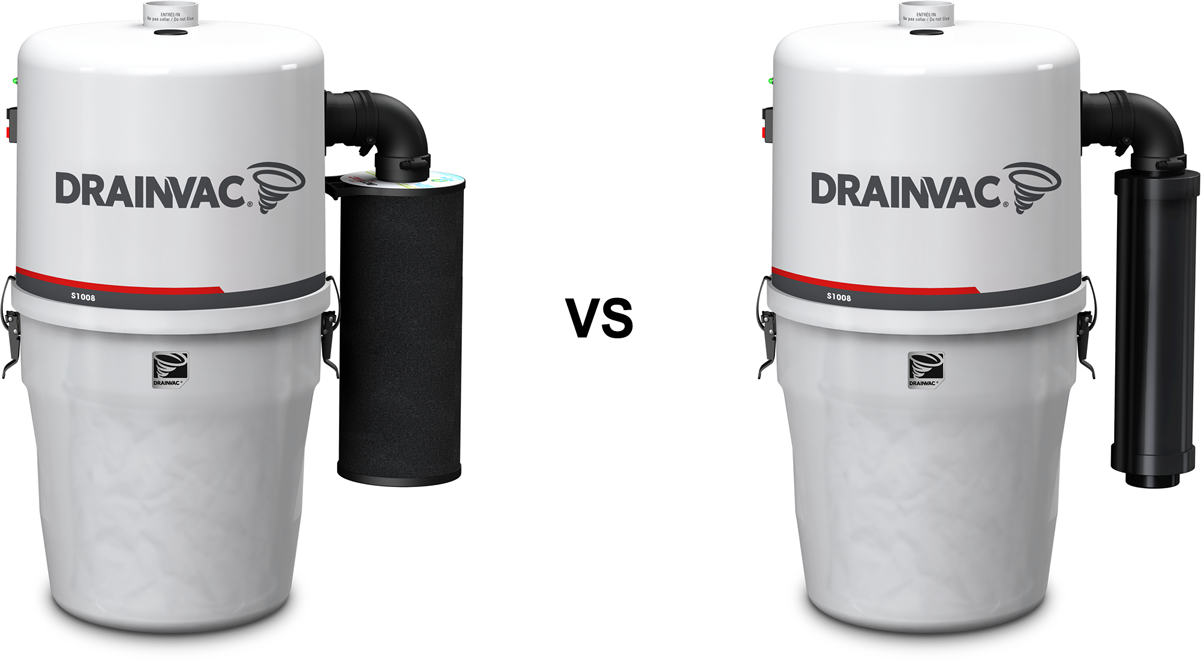
Whether you choose the option of an interior air outlet with a filter or an exterior air outlet with a silencer, you will not be disappointed with the performance of your vacuum cleaner. However, these two options have their own advantages that are worth considering when choosing your central vacuum system, despite their equivalent price.
Advantages : Filter
By opting for a filter, the vacuumed air will be released inside the house. The main advantage of the exhaust filter is its simple installation : no need to drill into the walls, the filter hangs on the central vacuum unit. The air quality inside the residence is unaffected because the Activac 3 exhaust filter retains up to 99.97% of harmful particles in the ambient air. We strongly recommend replacing the filter every year for an optimal filter performance. However, dual-motor units cannot use an Activac 3 filter, as this would create too much restriction on the air outlet. It is one of the reasons why the option with outside air outlet exists.
Advantages : Silencer
By opting for a silencer, your air outlet can be inside or outside the house. The muffler is offered on all Drainvac central vacuum systems. This configuration involves only one purchase when acquiring the vacuum cleaner since the performance of the muffler does not deteriorate. Additionally, the muffler allows more air to exit the unit, ensuring optimal system performance. But the air leaving the unit is not filtered, so take this into consideration if you choose this option for an indoor air outlet.
Where to locate the wall outlets?
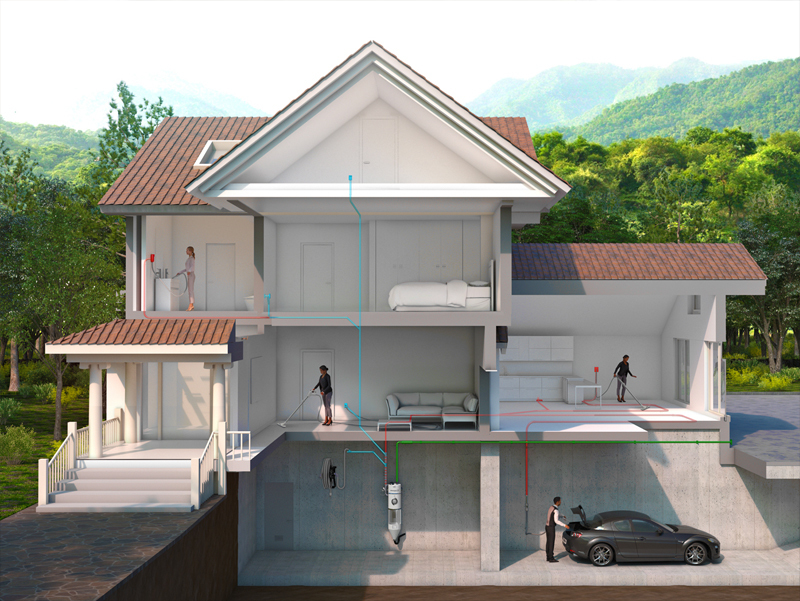
Before installing your central vacuum, do not forget a very important step if you do not already have a piping network in your home: define the number of wall outlets you are going to install as well as the length of the hose of your vacuum. The model choice may vary based on this information.
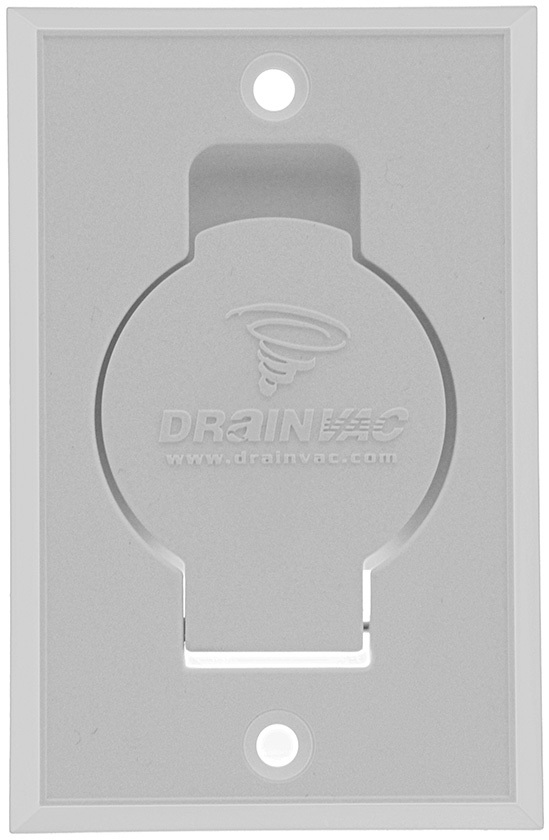
Here are some tips to follow during this step.
Install your wall outlets in strategic places: ideally in the center of the living area and not at the ends, in order to reach the entire space with a shorter hose. In addition, this central location should give you access to several rooms in the house.
Also, remember not to position a wall outlet in a place that may be obstructed by furniture or household appliances in the future. Wall sockets must be easily accessible and unobstructed at all times.
As the air flows through the piping and the hose, turbulence is created, and power is gradually lost. Ideally, your central vacuum hose should not exceed 12 metres (about 40 feet). A longer hose will cause a significant loss of power requiring a more powerful system to compensate. We always recommend trying to position outlets so that a hose of 12.2 metres (40 feet) or less can reach all corners.
Did you know that Drainvac does not only offer conventional wall inlets?
We also have a wide range of floor inlets, ideal for small households. As easy to install as a regular inlet, floor inlets have the advantage of simply being activated using a latch that is tilted with your foot.
Broom and you’re done!
The VacPan is the most popular and affordable model offered in different colour choices. You can get it here.
For a few dollars more, the Cansweep, on the other hand, has a design that makes it easier to vacuum larger debris. It is recognizable by its door which swings up and down to turn it on. You can get it here.
For countertops, there is the WallyFlex including an expandable hose which is very useful in bathrooms and kitchens. Available in white or black, this tool is a must for quick clean-ups!
Maintaining your central vacuum
Drainvac central vacuum systems are manufactured and inspected at our factory by qualified and specially trained personnel. However, certain methods of use must be followed in order to obtain maximum performance and avoid unnecessary service calls.
Change the bags and clean the filter
If you have a unit that uses a cage filter and a bag, it is important to clean the filter when the dust bag needs to be replaced, preserving the suction power of your vacuum cleaner and prolonging its life.
The dust bag cannot be washed or emptied. It must be replaced with a new bag. If there is a noticeable drop in power from your device, this may be a sign that the bag is full and needs to be replaced. As a guideline, for regular use with a 3,75 gal (17 L) unit, the bag should usually be replaced after 6 to 12 months. For a 9-gal (41 L) unit, it is around 12 to 18 months. Warning: never replace the bag when the unit is still running.
The filter can be easily cleaned in the washing machine but putting it in the dryer is not recommended. It must also be completely dry before being reused. To be quickly operational, get a second filter that you can exchange alternately with the first during each wash.
Here is the procedure to follow to replace the bag and clean the filter:
• Detach the latches from the canister.
• Remove the bag and throw it away.
• Clean or wash the filter as needed, hang to dry.
• Place the filter.
• Place the new bag.
• Reattach the canister to the main unit.
How often should the canister be emptied
We recommend cleaning the cartridge filter every 6 months to preserve your unit's suction power while extending its lifespan.
If your model runs with a cartridge filter and it is installed for maintenance reasons, it is important not to start the unit, as you risk damaging your motor.
• If your model is equipped with a foam filter, you can shake it or dust it with a can of compressed air.
• However, if your central vacuum includes a cartridge filter, this can be washed with water.
In both cases, make sure the filter is completely dry before putting it back in the unit.
When to change the carbon brushes
To enjoy optimal profitability from your central vacuum, it goes without saying that you must take the necessary measures to ensure its longevity and durability. To do this, it is, of course, necessary to carry out periodic maintenance of certain components of the system. Replacing the motor's carbon brushes is essential. These brushes, crucial to the long-term performance of the motor, must be checked after 500 hours of use.
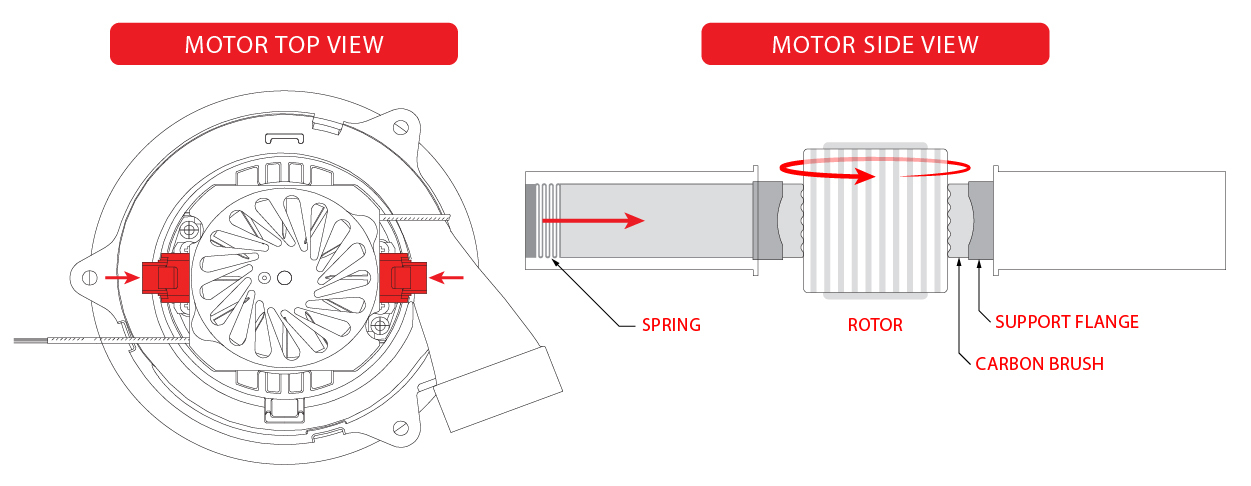
Their operation is simple. Two brushes are located on either side of the motor and are pressed against the rotor by springs. The current flowing from one brush to the other thus makes it possible to induce the rotation of the motor. But if your brushes are too worn, it’s the support flanges that will rub against the rotor, damaging the motor.
DIYer? If you want to, these brushes can be changed in just a few minutes. We also have a detailed video that explains the maintenance process depending on the type of motor you have: https://youtu.be/i9T2G4Ws8_4 If you don’t know what type of motor and carbon brushes you have, don’t hesitate to contact us. You can also call a certified retailer to have it done.
Also, be aware that after the carbon brushes have been changed, your motor will be good for another 500 hours before having it checked again. However, it is advisable to replace the motor when the new carbon brushes have reached the end of their life.
Reduce the noise of your vacuum cleaner

The central vacuum remains a relatively noisy household appliance and this aspect can be annoying for some people.
However, there are several ways to reduce the noise emitted by your device. Here are five tips to reduce the number of decibels while cleaning your home :
1. Central vacuum with outside air outlet
Whether your vacuum cleaner releases the air inside a room or outdoors does not greatly vary the unit's noise level. However, if you opt for a vacuum cleaner with an exterior outlet, a silencer is included with all our units, except those of the PRO Series. If you don’t have a muffler, don’t hesitate to get one from a retailer or online.
2. Central vacuum with interior air outlet
If you opt for an interior air outlet, don’t worry! There is also a solution for you. It is possible to add an Activac 3 filter. This filter, in addition to reducing noise, improves air quality by rejecting dust at the outlet using a carbon membrane that controls odours.
3. Choose the right central vacuum
If your choice is not yet made for a particular model, know that generally, the more your unit is powerful, the more noise it emits. Some people are always looking for the strongest on the market. However, when it comes to central vacuuming, it is important to choose a model that is suitable to your home. If you live in a small house or don’t have carpeting, the most powerful vacuum may not be the best one for your needs.
If you already have a noisy vacuum cleaner and are looking to replace it, a 60-decibel model like the G2-008 might be just right for you.
4. Choose the right location for your central vacuum
Barring exceptions, it is generally recommended to install the central vacuum in the basement to facilitate the vacuuming work of the unit and ensure that the vacuumed materials go from top to bottom in the piping. If you can, it is advisable to choose a room with little traffic where noise will not be a problem. If your laundry room or workshop is located in the basement, these are perfect rooms for installing a vacuum cleaner. If the underside of your staircase is closed, but accessible, a small compact 800 AW model like the S1008 would be ideal.
5. Add an Audioprotek muffler
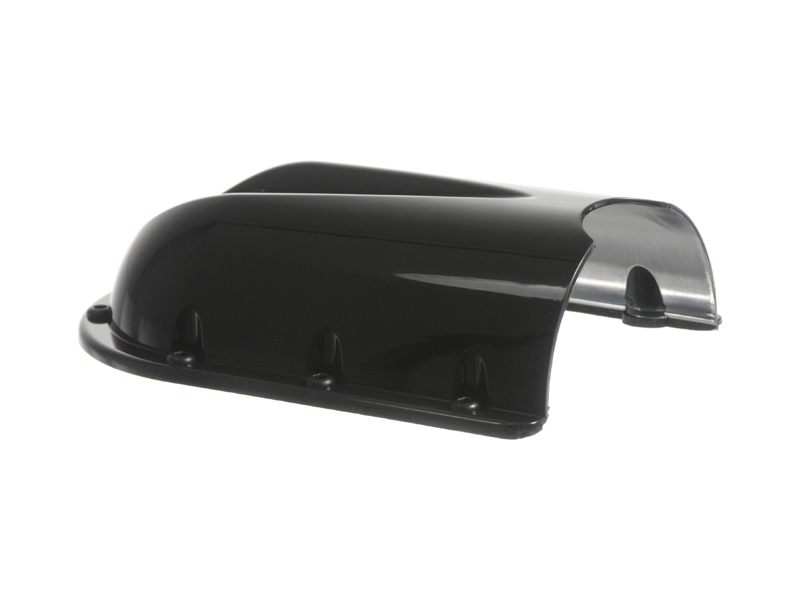
Some models are equipped with an audioprotek muffler. This plastic accessory slightly reduces the noise emitted by the motor.
In summary, it should be remembered that the central vacuum cleaner remains less noisy than its competitors such as the upright vacuum cleaner or the canister vacuum cleaner since the motor of the latter is generally located far from the user. It is also much more powerful and cleans more thoroughly than other types of devices.
Best accessories for your central vacuum
In order to facilitate your work with a central vacuum, it is important to choose the right accessories to meet your needs. The following lines introduce you to some of these tools and their usefulness in your home.
What tools and brushes do I need?
At Drainvac, a wide range of different tools are available: crevice tools, upholstery tools, dusting tools and many more! Available in various lengths and made of different materials, these accessories each have their own distinct specialties. For example, the nylon fiber brush and the comb brush are perfect for grooming short-haired or long-haired animals. In addition, Drainvac also offers several floor brushes with or without wheels, in synthetic hair or horsehair, with swivel on one or three axes of rotation, etc.
• The choice to use a floor brush with or without a wheel is a very personal choice. Some find the wheels help them glide better on floors, while others prefer a simpler design without wheels. But both work just as well.
• Some tools may contain synthetic bristles, which are generally softer on surfaces. While other attachments feature horsehair bristles, providing more vigorous brushing.
• The majority of floor brushes can pivot in a single axis, that is from top to bottom to pass under the bed, for example. This is the most common design that provides good brush control. Drainvac also offers a tri-axis rotating brush for an exceptionally maneuverable tool, especially under and around obstacles such as chairs and tables.
Two types of brooms for a central vacuum
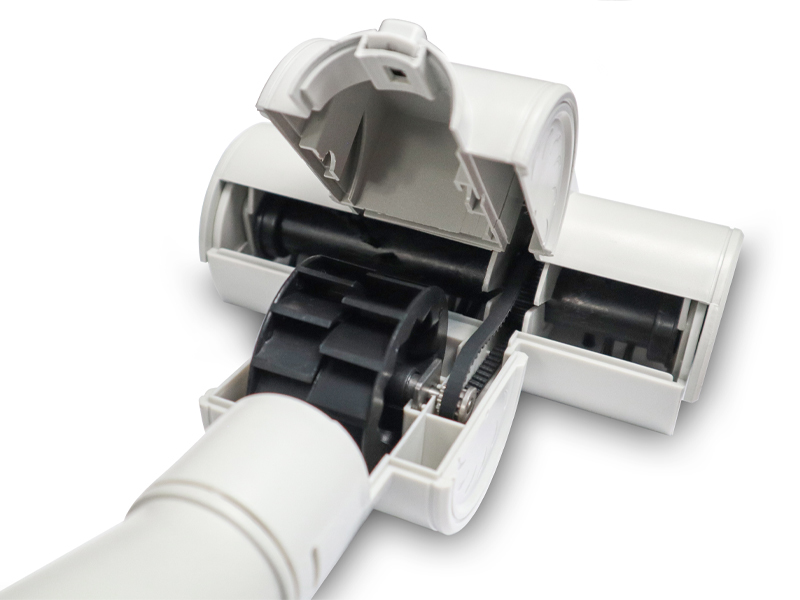
Carpet brooms can be categorized into two categories: the turbo broom and the electric broom. Very affordable, the turbo broom generally meets the needs of the consumer. The brushes of this broom rotate mechanically thanks to the power produced by the motor. You should therefore know that you will lose a little power for the suction. If you have a central vacuum of 600 AW or more and you have little carpets, the turbo broom should suit your needs.
On the other hand, in the event that you have a large area of carpet to clean, or if you need more power, equipping yourself with an electric broom is a better option. This broom bears its name because the rotation of its brushes is done thanks to an electric power supply, therefore not reducing the suction of the central vacuum cleaner.
10 Unsuspected uses with your central vacuum
When we think of a central vacuum, collecting dust and debris from the floor is probably the first use that comes to mind. However, this appliance can do much more for you, it is the best ally to maintain cleanliness in your home for several reasons. Here are 11 unsuspected uses you can do with it :
1. Brush your pets
If you have a large dog, you know that four-legged friends leave a lot of hair around the house. A powerful central vacuum is without a doubt the best way to get rid of hair on the floors.
But did you know that it is quite possible to brush your pet using your vacuum cleaner? There is even a tool dedicated to this use. You just need to make sure your pet enjoys this practice, as it can be scary for some.
Dust your curtains
Curtains made of heavy materials easily trap dust, which promotes its accumulation in your home and increases the risk of allergies. The central vacuum is a perfect tool for dusting them. To do this, you can put a round brush at the mouth of the hose and pass it over your curtains. It is advisable to do this operation as soon as you can. Washing the curtains once or twice a year also helps reduce dust accumulation.
Cleaning curtains made of light materials is a delicate task that the central vacuum can also help you with. The majority of hoses have an air regulator (usually located at the end of the handle), by opening it, the suction power decreases.
3. Clean the blinds
Just like with curtains, you can use the central vacuum to remove dust on your blinds. Just go over the blades of it using an appropriate tool.
4. Clean your sofas
The central vacuum is very effective for cleaning couches. You can thoroughly vacuum the dust and dirt accumulated in the fabrics of these using an upholstery brush. It is also possible to remove odours by applying backing soda to your sofa. You can let it sit for about 24 hours before cleaning it with your central vacuum.
5. Clean window rails
Window and patio door tracks are difficult to reach and therefore difficult to clean. Yet these are places that accumulate a lot of dust and dirt.
A central vacuum allows you to clean them efficiently. A crevice tool is perfect for this task.
6. Cleaning a keyboard
A computer keyboard is a place where a lot of dust and trash accumulates. Since it is an object used on a daily basis, it is important to keep it clean. Many people neglect this task since it is difficult to clean between the keys. However, there are accessory kits dedicated to this use. By adding the tips included in these kits to the hose of your device, you can thoroughly clean your keyboard.
Clean car seats, chairs, and armchairs
If you have a vacuum cleaner that can clean liquid materials, you can get a cleaning kit that deep cleans fabrics. You will be able to maintain the cleanliness of all your upholstered materials such as your chairs or your car seats. This kit allows you to do much more than vacuuming: it uses a water jet that cleans the fabrics in depth. The water is then directly sucked up, so the fabrics do not stay wet.
9. Dusting
Dusting brushes make the central vacuum a very suitable tool to overcome the accumulation of dust on furniture or shelves.
10. Clean walls and ceilings
By getting a mop brush made of microfibers, you can clean the accumulation of dust on your walls and ceilings without scratching them. Note that you should not use the same brush on the floors as on your walls if you do not want to dirty them.
Conclusion
We hope we have succeeded in demystifying the secrets of central vacuums by helping you to better understand the jargon of central vacuums; by supporting you in your choice of a model; and with our tips and tricks for using your vacuum cleaner and accessories.

For further information, do not hesitate to contact us by email at info@drainvac.com or by telephone 1-800-408-1448. You can also seek advice from a specialist through our extensive network of retailers.
Happy cleaning!









